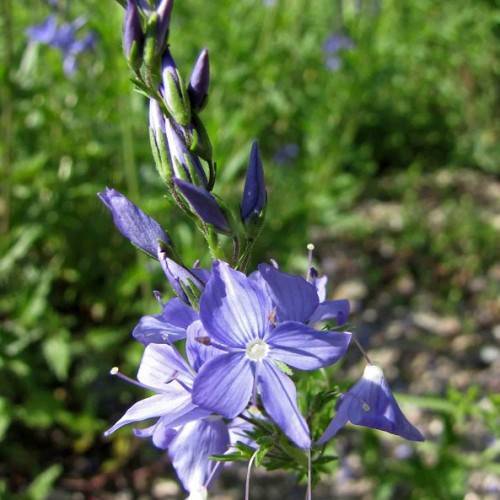
large speedwell
Veronica austriaca
Cycle:
Herbaceous Perennial
Watering:
Average
Hardiness Zone:
4 - 8
Flowers:
Flowers
Sun:
Full sun,part shade
Leaf:
Yes
Growth Rate:
Low
Maintenance:
Low
Drought Tolerant:
Yes
Salt Tolerant:
Yes
Care Level:
Medium
watering
Large speedwell should be watered regularly, but gently, as its roots are shallow. During its growing season, which typically starts in late spring, water the plant once or twice a week, increasing the frequency to every other day on particularly hot days. During its dormant season, usually lasting from fall through winter, water it less often, preferably once a month. Always water your large speedwell early in the morning, and use lukewarm water to prevent shocking the plant. Additionally, make sure to water the soil around the plant thoroughly and not just the stems or foliage, as this will allow the plant to draw up the needed moisture from the soil.
sunlight
Large Speedwell enjoys full sun, meaning that it will need direct sunlight for at least 6 hours per day for optimal growth. It is also tolerant of partial shade, although it prefers a sunny spot that has protection from the afternoon sun. Consider planting in a location that receives sunlight towards the morning, as most sun is usually received in the first 1-2 hours after sunrise. If enough sunlight is not available in a certain area, consider offering supplemental lighting. Large Speedwell should be exposed to 11 to 13 hours of light per day in order to provide photosynthesis for the plant to thrive.
pruning
Large speedwell (Veronica austriaca) benefits from pruning every spring. This can be done just after flowering (around May, depending on the climate where it is planted) or in early spring. Pruning should involve cutting out all of the dead flower stems from the previous season, as well as any woody, leggy stems that have lost their foliage. After this initial cutoff, the plant can be further shaped to reveal its attractive mounding habit. If desired, the existing stems can be cut back to a desired height or shape. Pruning should never be more than 1-third of the plant's current height in any given year. Plants should also be regularly monitored to remove any damaged or diseased stems.
